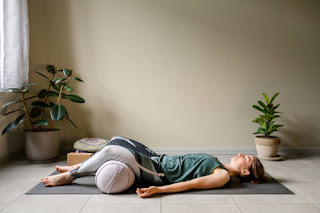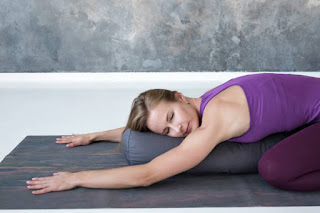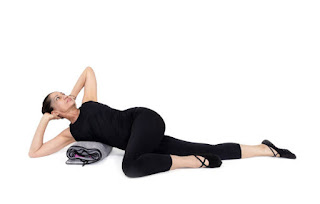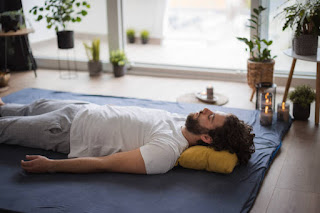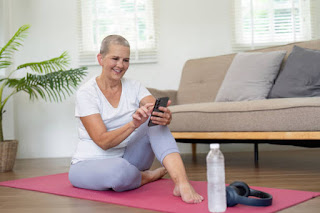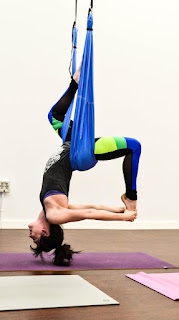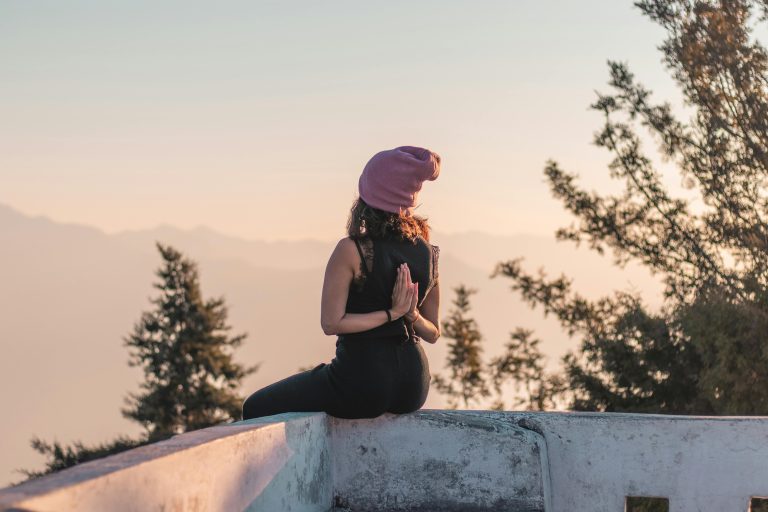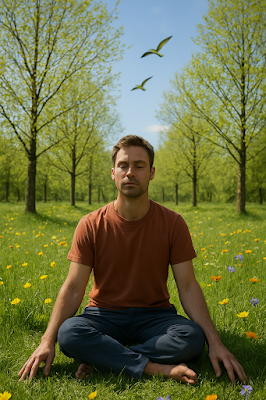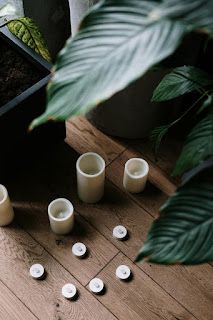Restorative Yoga: A Gentle Practice for Insomnia
Find Deep Rest: Restorative Yoga for Soothing Insomnia
Struggling with insomnia or restless nights can be exhausting, leaving you feeling drained and unfocused during the day. If you’re searching for a gentle, effective way to calm your mind and prepare your body for a night of deep sleep, restorative yoga might be the perfect solution. This style of yoga uses props like blankets, pillows, and bolsters to fully support your body in restful poses, allowing you to release tension and drift into a state of deep relaxation. Unlike more active forms of yoga, restorative yoga is about letting go and allowing the body to rest, making it especially suitable for those with chronic sleep issues or insomnia.
In this article, we’ll explore a few key restorative yoga poses that you can practice at home, providing detailed instructions for setting up each pose and creating a mental picture to help you fully relax.
The Healing Power of Restorative Yoga
Restorative yoga focuses on slow, deliberate movements and long holds in supported postures, allowing the body to settle into a state of rest. This practice activates the parasympathetic nervous system—often referred to as the “rest and digest” system—helping to lower the heart rate, reduce cortisol levels, and create a sense of calm that prepares the body for sleep.
Restorative poses are typically held for 5-20 minutes, giving your muscles, joints, and mind time to fully relax. With the right setup, you can create a practice that feels like a gentle hug for the entire body, guiding you into a peaceful state.
Savasana (Corpse Pose): The Art of Complete Stillness
Savasana, or Corpse Pose, is the ultimate relaxation pose and a staple of any restorative yoga practice. It’s a simple pose that encourages total stillness, allowing you to release the tension held in your body.
Setting Up Savasana at Home:
- Lie flat on your back on a comfortable surface like a yoga mat or a thick blanket.
- Place a bolster or rolled-up blanket under your knees to release pressure from your lower back.
- If you like, place a folded blanket under your head to support your neck.
- Let your arms rest at your sides, palms facing up, allowing your shoulders to drop away from your ears.
Mental Image and Sensations: Imagine yourself sinking into the earth beneath you, as if the ground is cradling your body. Feel the gentle support under your knees and neck, creating a feeling of weightlessness. With each breath, imagine tension melting away, leaving your body feeling lighter and more at ease. Your entire body is soft, like butter gently melting in warm sun.
Duration: Hold for 10-15 minutes, focusing on slow, deep breaths.
Savasana is ideal for the end of your restorative practice, helping to transition your mind into a state of rest. It’s also a wonderful way to ease into sleep if you’re lying in bed.
Child’s Pose (Balasana): A Gentle Hug for the Body
Child’s Pose, or Balasana, is a deeply soothing posture that releases tension from the lower back, shoulders, and chest. This pose offers a sense of safety and grounding, making it an excellent choice for those who find it difficult to calm the mind before sleep.
Setting Up Child’s Pose at Home:
- Kneel on the floor with your big toes touching and knees spread wide apart.
- Place a bolster or a stack of pillows lengthwise between your knees.
- As you exhale, fold forward, resting your torso on the bolster or pillows.
- Turn your head to one side, and let your arms relax by your sides or stretched out in front of you.
Mental Image and Sensations: Imagine yourself as a small child curling up into a cozy, protective space. Feel the gentle pressure of the bolster against your chest and abdomen, creating a sense of comfort and grounding. As you rest, let the weight of your body sink into the props, feeling each breath gently lift and lower your back. You’re enveloped in warmth and security, as if wrapped in a soft blanket.
Duration: Hold for 5-10 minutes, breathing deeply into the back body.
Child’s Pose is perfect for releasing pent-up stress and soothing an anxious mind, making it a wonderful addition to your bedtime routine.
Supported Twists: Releasing Tension from the Spine
Supported twists help to release tension from the spine and back muscles, while gently massaging the abdominal organs. Twists can be especially beneficial for those who hold stress in the lower back and digestive area, encouraging a sense of release and letting go.
Setting Up a Supported Twist at Home:
- Sit on your yoga mat with your legs extended straight in front of you.
- Place a bolster or pillows beside your right hip, lengthwise along the mat.
- Bend your knees slightly and twist your torso to the right, lowering your chest down onto the bolster.
- Rest your arms comfortably on either side of the bolster and turn your head to one side.
- For extra support, place a folded blanket under your hips.
Mental Image and Sensations: Imagine your spine unwinding like a coiled rope, releasing any knots or tightness as you sink deeper into the twist. Feel the gentle stretch along your back, and let the support of the bolster create a sense of ease in your abdomen. With each exhale, visualize tension leaving your body, and with each inhale, welcome a sense of calm and spaciousness.
Duration: Hold for 5-10 minutes on each side, taking deep, even breaths.
Supported twists are a wonderful way to end the day, helping to create space in the body and release the stress of the day.
Tips for Deep Relaxation in Restorative Yoga
To get the most out of your restorative yoga practice, it’s important to create an environment that supports relaxation:
- Dim the Lights: A dimly lit room can signal to your body that it’s time to wind down. Consider using candles or a soft lamp.
- Play Soothing Music: Gentle music or nature sounds can help create a calming atmosphere.
- Use Props for Support: Don’t be afraid to use extra pillows, blankets, or blocks to make each pose more comfortable. The goal is to feel completely supported.
- Focus on the Breath: Slow, deep breathing helps to activate the parasympathetic nervous system, encouraging relaxation. As you hold each pose, focus on expanding your breath into your belly and exhaling slowly.
For those looking to explore more about creating a peaceful bedtime routine, my article Bedtime Yoga Poses That Promote Restful Sleep offers additional suggestions.
Extending Your Understanding: Resources for Restorative Yoga
If you’d like to dive deeper into the world of restorative yoga, consider exploring these resources:
- Books:
- “Relax and Renew: Restful Yoga for Stressful Times” by Judith Hanson Lasater – A comprehensive guide to restorative yoga with detailed pose instructions.
- “The Art of Restorative Yoga” – Focused on using props to deepen relaxation, perfect for beginners.
- Online Classes:
- Yoga with Adriene on YouTube offers free restorative yoga sessions, including those specifically tailored for sleep.
- Glo Yoga – An online platform with a wide range of restorative yoga classes that can be filtered for sleep and relaxation.
- Meditation Apps:
- Calm and Insight Timer feature guided relaxation practices that can be paired with restorative yoga, making them perfect companions for a restful night.
These resources will help you deepen your practice and find new ways to incorporate relaxation into your nightly routine.
Embrace the Rest You Deserve
Restorative yoga offers a gentle, yet powerful approach to overcoming insomnia and sleep difficulties. By fully supporting the body in restful postures, this practice allows you to release both physical and mental tension, guiding you into a state of deep relaxation. Whether you struggle with chronic sleep issues or are simply looking for a way to unwind before bed, restorative yoga can help you find the rest you deserve.
With a few simple props and the willingness to let go, you can create a soothing practice that transforms your nights from restless to restful. Let these gentle poses guide you into a place of stillness and ease, and discover the profound impact of restorative yoga on your sleep quality.

